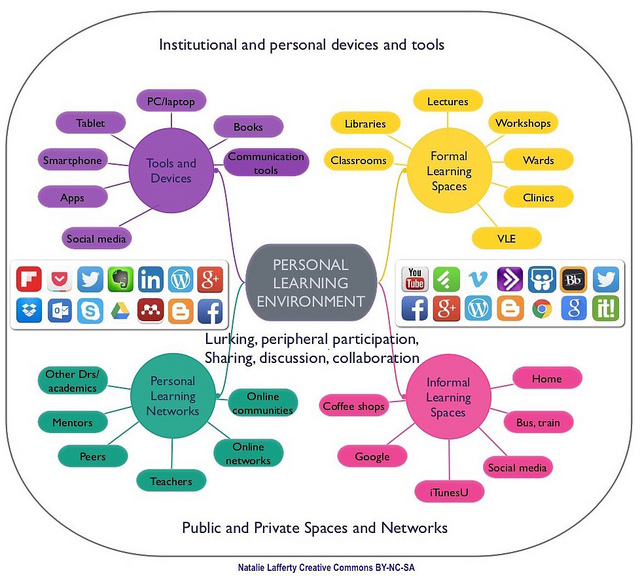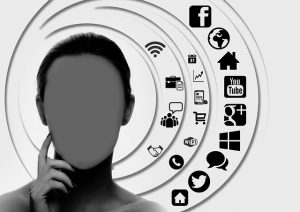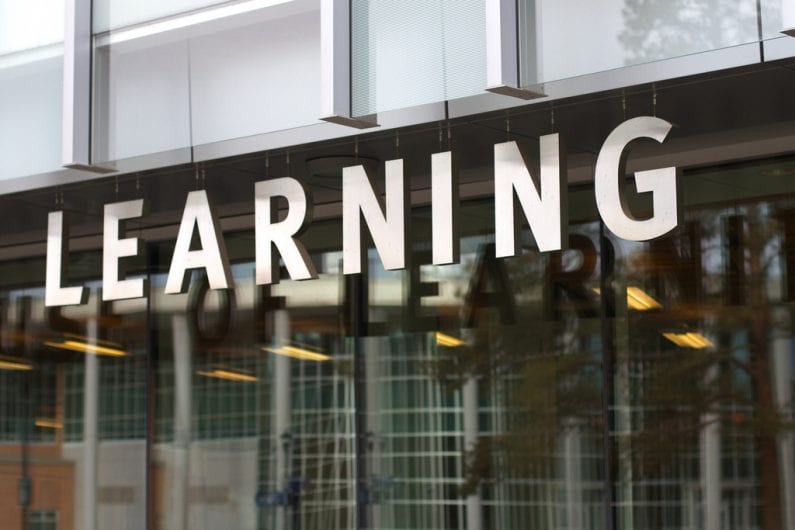This week’s Learning X is exploring learning in a digital world and thinking about our learning footprints. There’s often lots of talk about students needing to be aware of their digital footprint as they live their lives online through social media channels. Over the course of this week we’re going to switch the focus to how we as academics learn and the places we learn in. We’ll look at how we use technology more generally and go on to consider areas such as privacy, ownership and who’s in control of what we see online. Developing our understanding of these issues can help shape how we can develop as teachers in the digital space in safe and positive ways and consider how we might then go on to use technology with our students.

As we begin to explore our learning footprints let’s start by thinking about how we learn. Everyone learns in different ways and about a vast array of different things. We learn facts and skills and about our professional identities. The process of learning is complex and how we approach it varies according to what we’re trying to learn or master together with the context of the learning. Whilst many of us maybe have been, or are, involved in elements of formal learning through higher programmes of study and continuing professional development activities, much of our lifelong and life wide learning is informal and self-directed. Different forms of content play a role in supporting our learning as do people, so much of learning is social and situated in the workplace in our communities of practice. The digital world is also playing a growing role in supporting our learning and changing the look and feel of our learning environments and leading to the concept of the personal learning environment (PLE). With access to information online 24/7 we can learn anytime, anyplace, anywhere and self-organise our learning and create our own PLE. We can think about our PLE in terms of:
- The spaces that we learn in, both the physical and the virtual world. For example in the office, on the sofa at home in the evenings, on the commute into university, at academic seminars, online courses or online forums.
- The tools and resources that we use. These might be open and free to use or are paid for or closed and restricted access. There’s Google and the Library search and other databases to access resources to support our learning, there are the tools, apps and websites that we might use.
- Where we record and reflect on our learning. Perhaps using pen and paper, by creating sketch notes or using digital tools and note taking apps to organise and file resources that support our learning.
- How we share what we’ve learned. In team meetings, conversations with colleagues or maybe share our learning through social networks and online forums.
The look and feel and what makes up a PLE will look different for each of us.
Think about your own personal learning environment (PLE). The physical and virtual spaces that you learn in, the tools and resources that you use, how you record and reflect on your own learning and then share it more widely.
Begin to map out or sketch your own personal learning cycle or learning environment, detailing the places, spaces, resources and tools that you use to support your learning. You can sketch this out any way you like. As you think about this don’t restrict yourself to learning that applies to your professional work life but also to your hobbies and interests, for example learning how to fix something, how to use the more advanced settings on a digital camera, how to ice a cake etc. Consider whether there are differences between where formal and informal learning takes place. Once you’ve finished mapping your personal learning environment you could compare with some that other educators have created over on this PLE wiki.
Are there similarities between your PLE and those on the wiki? This was created several years ago and you’ll see that some of the images are missing which highlights that transient nature of content on the web. Individuals close down sites and the content disappears.
It would be also be great to compare and contrast across the University so if you take a photograph with your phone you can upload it into this folder on the University’s One Drive only, open to those within the University. Alternatively share it via Twitter and include the hashtag #UoDLearnX.
You might want to try this exercise with students. It will give you an insight into how your students are learning and help them share useful resources and tips to support their learning.
With knowledge growing at exponential rates it can be a challenge to keep up to date and not feel over whelmed by constant streams of information flowing from multiple channels. The ability to filter information is an essential skill and our professional and learning networks can play a key role in helping to sign post us to useful content and resources.
Building on the concept of the personal learning environment, Canadian Harold Jarche has coined the term – Personal Knowledge Mastery (PKM) built on the principles of Seek > Sense > Share. Jarche suggests that we need to take responsibility for our ongoing personal development and that we can’t always do this alone. He encourages individuals to
- Continuously seek out people and knowledge to improve the breadth and diversity of your knowledge networks.
- Experiment on a regular basis to try out new practices in order to learn by doing.
- Make sense of your life and work by making your thoughts explicit (sense-making). Review these from time to time.
- Seek out communities of peers that will enable you to improve your professional practices.
- Share your learning with discretion at work, in your communities of practice, and with your social networks.
Jarche highlights the process or routine of undertaking PKM will vary from individual to individual as we all adopt our own approach.
Some examples of approaches to PKM are outlined on this blog post ‘What is your PKM routine?‘ and there are links to other examples. Harold’s blog provides a wealth of blog posts written over more than a decade on connecting work and learning and sharing.
Scot Leslie, an educational technologist in British Colombia, posted some observations on PLE diagrams over on his blog back in 2012. It’s worthwhile reading this and seeing which category your own PLE diagram falls into. What’s striking in reading Scott’s blog post is that a number of the images that Scott embedded into the blog post are missing, there are empty boxes where these diagrams would have appeared when he first published his post. This highlights how some of the spaces that we use to support our learning can so quickly and easily disappear. Individuals who were once enthusiastic bloggers stop and take down their sites.
The same is true of organisation websites and information portals. One only has to think of the old HEA subject centres and the websites that supported their work which have all now pretty much disappeared. This all points to the digital aspects of our PLEs being transient and in some cases having a short-shelf life as sites and digital tools come and go. Even Google has retired tools which 5 years ago might have been a common feature on some PLE diagrams. Scot Leslie – Some Observations on PLE Diagrams





